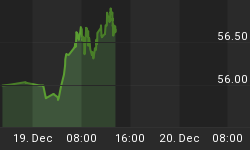It’s now official: after a nearly 13-year run, the United States’ longest bull market is in corrective mode and in grave danger of coming to a screeching halt. January has just concluded, and all the major U.S. stock markets benchmarks are in the red: the S&P 500 ended the month -5.3%, the Dow -3.3%, and Nasdaq -8.7%.
Looking at exchange-traded funds tied to the major averages, the world’s largest fund, SPDR S&P 500 Trust ETF (NYSEARCA:SPY), with $418B assets under management, closed out the month -5.5%; SPDR Dow Jones Industrial Average ETF (NYSEARCA:DIA) ended January -3.6% while Invesco QQQ ETF (NASDAQ:QQQ) also finished to the downside -9% to mark the worst January since the 2008-09 financial crisis.
Even more alarming has been a spike in market volatility, with the CBOE MKT VOLATILITY IDX hitting its highest reading in nearly a year. Heightened volatility in itself is not necessarily a bad thing, but tends to unsettle jittery markets.
Johan Grahn, who oversees exchange-traded funds (ETFs) at Allianz Investment Management, has warned that the U.S. stock markets are likely to remain on edge over the coming weeks thanks to a hawkish Fed.
Last week, the Fed announced plans to reduce the size of its bond holdings as well as hike short-term interest rates in March. While the announcement was largely expected--and likely baked into the markets--it only helped fuel the growing pessimism.
“The market feels that the Fed is backed into a corner and they now have to act aggressively, and there is now a sense that the Fed will need to be a lot more aggressive than the market had been expecting,”Grahn has said.
Indeed, many Wall Street punters have all along assumed that inflation pressures were transitory and the Fed would only hike rates three times in the current year, or around 75 basis points: right now there’s an 80% chance the Fed Funds rate will announce four rate hikes to the cumulative tune of 100 basis points in 2022.
Downside protection
It’s against this backdrop that Wall Street experts have developed new strategies to protect long-term investors from a market crash.
In June 2020,Grahn and his team at Allianz launched a series of ETFs that can offer some measure of protection against volatile markets. Known as “Buffered Outcome” ETFs, the new funds use a similar approach to that used by structured notes, but are much more transparent because they are based on options contracts on the S&P 500, and charge lower fees to boot.
For example, the AllianzIM U.S. Large Cap Buffer20 Jan ETF (AZBJ) holds its value even if the S&P 500 falls 15%-20% by next January, and promises to limit its loss to 10 percentage points smaller than an unhedged S&P 500 fund. True to word, the ETF has only declined 2.3% since the beginning of the year vs. -5.3% return by the S&P 500. Each of Allianz’s funds carries a 0.74% annual expense ratio, about the average fee charged by actively-managed ETFs but lower than what many structured note products offered outside of an ETF wrapper charge.
As with any hedging scheme, Allianz’s new ETFs give up some upside if markets rally sharply higher and will lag a highly bullish market by as much as 10%.
Innovator Capital Management also offers buffered (or defined) outcome ETFs with a broader stable of such funds that tap into more specific niches such as small cap indexes, bond indexes and international market indexes, many of which carry a slightly higher 0.79% expense ratio. S&P 500 Power Buffer ETF January (PJAN) is the largest in the category, with $500 million in assets under management.
















